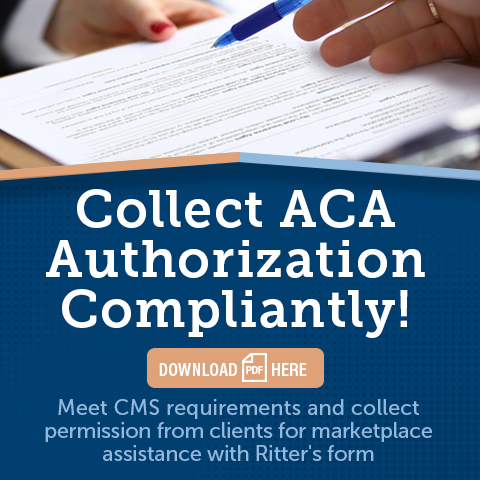How do your clients get their Medicare prescription drug coverage? Based on recent trends, the majority of Medicare beneficiaries are choosing Medicare Advantage Prescription Drug plans over stand-alone options.
As we recover from a global pandemic and inflation worldwide, we’ve seen updated and new legislation affecting the affordability of Medicare for more than 64 million enrollees. Specifically, the Inflation Reduction Act (IRA) attempts to provide relief for Medicare beneficiaries who need prescription drugs. While the IRA’s changes aim to make prescription drugs more affordable for all Medicare beneficiaries, I believe the health history of the stand-alone PDP market and potential side effects of the changes may continue to drive the trend toward MAPD plans.
Part D Check Up
Let’s look at Part D’s “health history” over the past few years.
PDP Enrollment vs. MAPD
According to data from KFF, the last time the PDP market saw a year-over-year increase in enrollment was between 2017 and 2018, when it increased by 300,000 members. Enrollment stayed about the same between 2018 and 2019, but decreased by 400,000 members between 2019 and 2020, 700,000 members between 2020 and 2021, and 700,000 members between 2021 and 2022.
Meanwhile, the MAPD market has seen consistent enrollment growth each year since Part D’s inception in 2006. During the three years that stand-alone PDP enrollment decreased, MAPD plan enrollment increased by 1.8 million, 2 million, and 2 million members, respectively. Comparatively, from 2019 to 2022, MAPD enrollment increased by 34 percent while PDP enrollment decreased by 8 percent.
During the three years that stand-alone PDP enrollment decreased, MAPD plan enrollment increased by 1.8 million, 2 million, and 2 million members, respectively.
Year-Over-Year Growth in PDP & MAPD Enrollment
Original Medicare, PDP, & Med Supp Benefits vs. MAPD
Enrollment and growth may be higher for MAPDs for several reasons, one being their benefits. Many Medicare beneficiaries are enticed by the $0 premium available on many MAPD health maintenance organization (HMO) plans, and now, even preferred provider organization (PPO) plans. Additionally, there’s the appeal of the extra benefits featured in many MAPD plans compared to Original Medicare with a PDP and Medicare Supplement (Med Supp), all-in-one coverage, and the familiarity of carrier brands and the structure of HMO and PPO plans.
Most MAPD plans come with value-added benefits, such as dental, vision, hearing benefits; fitness benefits; over-the-counter (OTC) cards/allowances; and a nurse line. Members have one Medicare insurance card to keep track of and present for hospital, doctor office, and prescription drug coverage. Additionally, their primary medical coverage is provided through a carrier, similar to employer-provided health coverage, with an HMO or PPO structure.
With PDPs, there’s prescription drug coverage — no OTC cards/allowances, no fitness benefits, and no nurse line. Medicare Supplements may provide some extra benefits like access to fitness programs, but do not provide dental, vision, hearing coverage. Original Medicare beneficiaries often have their Medicare Part A and B card, a PDP card, and a Med Supp card to hold on to and present.
Original Medicare, PDP, & Med Supp Costs vs. MAPD
KFF data also shows that the premiums and deductibles associated with PDPs are higher than those for their MAPD counterparts. The enrollment-weighted average monthly premium for 2022 PDPs was $40, while drug coverage in MAPDs was only $11 for all plans and $35 for plans that charged a monthly premium. It’s important to note that 69 percent of 2022 MAPD plans had a $0 premium, and all stand-alone PDPs charged a monthly premium.
Keep in mind, beneficiaries with Original Medicare pay a Part B premium, and sometimes, a Part A premium, though not often. If they have a PDP and Med Supp, they also pay premiums for those plans. MAPD beneficiaries must pay the Part B premium in addition to their MAPD plan’s premium, if it has one.
The enrollment-weighted average monthly premium for 2022 PDPs was $40, while drug coverage in MAPDs was only $11 for all plans and $35 for plans that charged a monthly premium.
As for deductibles, 79 percent of PDP enrollees paid the maximum of $480 in 2022; only 20 percent of 2022 MAPD enrollees paid this amount with their plans. More than half of all MAPD beneficiaries (51 percent) were enrolled in plans with a $0 prescription drug deductible. The enrollment-weighted average deductible for PDPs was $398, while drug coverage in MAPDs was $90.
Original Medicare beneficiaries with a PDP must meet deductibles for Part A, Part B, and their PDP. If they have a Med Supp, it may cover their Part A deductible partially or in full and could also cover their Part B deductible; however, it depends on the Med Supp plan. Generally speaking, MAPD beneficiaries have to meet a prescription drug coverage deductible and general health coverage deductible, though some plans set one or both of these deductibles at $0.
Summary
The data show that more and more people are choosing MAPDs over Original Medicare with a PDP and Med Supp. Analyzing costs and benefits provides some insight on why this may be the recent trend. As we’ll review further, there are quite a few new limits, rules, and changes happening with Part D over the next few years that may reinforce and further develop the patterns we’re seeing. All this said, I always recommend that agents give their clients a clear picture of the trade-offs of choosing Medicare Advantage versus Medicare Supplements.
Those who choose Original Medicare, a PDP, and a Med Supp may have to keep track of more cards, pay higher premiums, and give up extra benefits, but they can see any provider in the U.S. who accepts Medicare and don’t have to worry about referrals or cost-sharing. They typically have peace of mind with knowing what they’ll owe out of pocket after paying their premiums. With an MA plan, you may have one card, lower premiums, and extra benefits, but there are set provider networks and significant cost-sharing that some beneficiaries might overlook. You may be unable to see the doctor or specialist you prefer or have to pay the maximum out-of-pocket limit.
Medicare coverage isn’t one size fits all. Agents should always recommend the path of coverage and plans that are in their clients’ best interests.
How Recent Legislation Aims to ‘Treat’ Rising Drug Costs & Affordability Issues
We’ve detailed the Inflation Reduction Act (IRA) changes that affect Medicare and the Affordable Care Act in another post, but here’s a recap of IRA’s changes in store for Part D.
- Drug manufacturers who increase the prices of their drugs faster than inflation will have to reimburse Medicare the difference (2023)
- Aims to limit out-of-pocket (OOP) cost growth
- Discourages drug manufacturers from increasing their prices faster than inflation
- Vaccines will be available to beneficiaries at $0 cost-sharing (2023)
- Helps improve Medicare enrollees’ access to vaccines
- Aims to lower beneficiaries’ OOP spending (e.g., could save potentially $57 for a dose of the shingles vaccine)
- Maximum OOP cost-sharing for Part D-covered insulin products will be capped at $35 per month (2023)
- Aims to lower beneficiaries’ OOP spending (e.g., average OOP cost per prescription of all insulin products was $54 in 2020)
- Many plans currently place insulin on Tier 3, the preferred drug tier, in their formularies, leading to higher copayments/coinsurance in the gap phase
- The Part D low-income subsidy (LIS) will be expanded to enrollees making less than 150 percent of the poverty line (2024)
- Estimated to help 400,000 beneficiaries save about $300 a year, based on 2020 numbers
- Could save partial LIS enrollees who take specialty medications a lot more
- Part D enrollees will no longer owe a 5 percent coinsurance on prescriptions after meeting the catastrophic coverage threshold (2024) and annual maximum out-of-pocket (MOOP) expenses for Part D will be capped at $2,000 (2025)
- The cap is estimated to help 1.4 million beneficiaries save more than $1,355 a year, based on 2020 numbers
- Especially helpful to enrollees taking high-priced drugs (e.g., cancer treatments)
- Insurers won’t be able to raise Part D premiums more than six percent per year (2024-2029)
- Aims to help keep premiums relatively stable for enrollees
- Aims to keep spending growth lower for enrollees
- Medicare will be able to negotiate drug prices with drug manufacturers (2026-2029)
- Applies to certain types and number of drugs
- Number of negotiable drugs will increase each year
- Aims to lower beneficiaries’ OOP spending
- Drug rebate rule’s implementation delayed until 2032
- Rule eliminates the safe harbor exemption in negotiated drug reimbursements between drug manufactures and pharmacy benefit managers/Medicare Part D plans
- Delay aims to avoid spikes in Part D premium costs
In Executive Order 14087, “Lowering Prescription Drug Costs for Americans,” which complements the IRA, President Biden instructed the Department of Health & Human Services (HHS) to begin testing new models to lower the price of high-cost drugs and increase access to innovative drug therapies for Medicare and Medicaid beneficiaries. HHS responded by proposing the following models:
- The Medicare $2 Drug List (TBD)
- Part D plans will be encouraged to offer a standardized Medicare list of generic drugs that treat chronic conditions (e.g., hypertension) for a fixed low copay
- Out-of-pocket costs for these drugs will be capped at a maximum of $2 per month per drug
- Aims to provide beneficiaries more predictable out-of-pocket spending, better outcomes, and medication adherence
- The Cell and Gene Therapy Access Model (2026)
- Medicaid agencies will assign CMS to coordinate and administer multi-state, outcome-based agreements with manufacturers for certain cell and gene therapies
- Aims to help Medicaid beneficiaries access potentially life-changing, specialty drugs (e.g., treatments for sickle cell disease and cancer)
- The Accelerating Clinical Evidence Model (TBD)
- CMS will work with the Food & Drug Administration to develop payment methods for drugs approved under accelerated approval to encourage timely confirmatory trial completion and improve access to post-market safety and efficacy data
- Aims to reduce Medicare spending on drugs that have no confirmed clinical benefit
- Encourages manufacturers to release drugs faster
Not all plans will participate in these test models, and not all beneficiaries will be eligible for these benefits. However, these programs are important to keep an eye on. Their eventual evaluation will further shape the future of prescription affordability and Part D coverage.
We all know that change comes with a price — certainly, changes such as these. Medicare is paying the cost for certain new benefits (e.g., the insulin price cap and $0 cost-sharing for vaccines) in 2023, but the cost for these benefits will be factored into the bid process of carriers for future years. As carriers attempt to balance the impact on their bottom line, these costs could trickle down to consumers eligible for or enrolled in Medicare and possibly even senior health insurance market agents.
The Potential Side Effects
While many of the IRA’s changes for Part D appear to be a win for consumers, certain ones will put more pressure on stand-alone PDP premiums and the health plans to pay the cost of prescriptions. For 2023, health plans are paying 15 percent of prescription costs above the OOP cap, but that will change to 60 percent of prescription costs in 2025. It’s unlikely the buck will stop there.
For 2023, health plans are paying 15 percent of prescription costs above the OOP cap, but that will change to 60 percent of prescription costs in 2025. It’s unlikely the buck will stop there.
Part D Cost-Shifting to Consumers
Beneficiaries will likely see some of these costs shifted back to them via increased premiums, especially beneficiaries subject to the Medicare income-related monthly adjustment amount (IRMAA), since their coverage is not fully subsidized. For 2023, beneficiaries are subject to IRMAA for their Part D premium if they’re single and earning more than $97,000 or married filing jointly and earning more than $194,000.
Remember, from 2024 to 2029, insurers won’t be able to raise premiums more than six percent per year; there will be other ways we could see costs shift. We also could see more pharmacies dropping out of preferred status in certain plans, leading to smaller networks. Additionally, we’ll likely see smaller formularies and tier modifications.
A Healthy Outlook for MAPD
Taking into consideration Part D’s recent health history, the upcoming IRA changes, and the potential side effects of those changes, I believe the trend toward the popularity of MAPDs will continue in the future.
- Since MAPD plans are broader in benefits, they have multiple ways to make up for the cost changes affecting Part D.
- The Part D portion of the premium and drug coverage deductible will likely continue to be lower for MAPDs.
- MAPD plans are convenient, packed with value-added benefits, and sought after by more and more Medicare eligibles and enrollees year after year. (There are even plans that will help members pay their utility bills.)
Given these factors, I do not expect MAPD commissions to be negatively impacted by the Part D changes happening. I expect carriers will continue setting MAPD commissions close to the CMS maximum.
While I don’t think the push toward MAPD in the Part D market is anything new, I do think recent legislation will continue to move the Medicare market further in that direction, at least for the immediate future. However, this doesn’t mean you should stop taking PDP sales. We should always strive to recommend the best course of action for our clients, including Original Medicare, a stand-alone PDP, and a Med Supp.
Hear CEO of Ritter Insurance Marketing Craig Ritter and more industry professionals discuss the upcoming Medicare Part D challenges and more! Watch InsuranceNewsNet’s “Rethinking the Senior Market: A look at new products, Medicare challenges” webinar.











Not affiliated with or endorsed by Medicare or any government agency.
Share Post